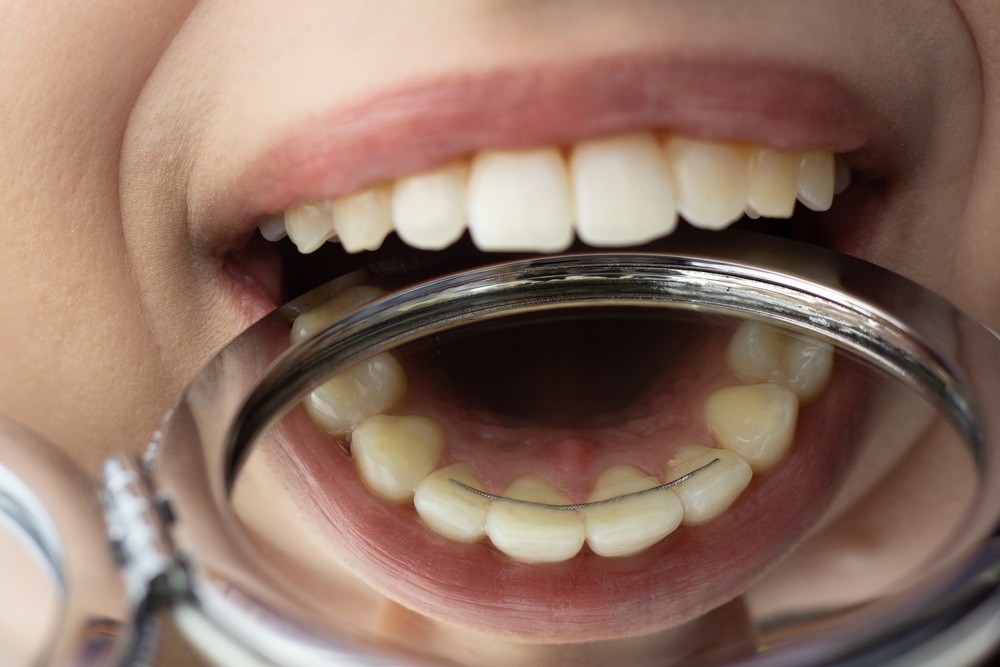
A smile is often considered one of the most charming features, but when teeth protrude excessively, it can impact both aesthetics and functionality. Overjet teeth, a dental condition characterized by the horizontal projection of the upper front teeth beyond the lower front teeth, is a common concern for many individuals. In this blog post, we’ll explore what overjet teeth are, the differences between overjet and overbite, the causes of overjet teeth, and available treatment options to address this dental issue.
Defining Overjet Teeth
Overjet, also known as “horizontal overbite” or “protrusion,” refers to the extent by which the upper front teeth project horizontally beyond the lower front teeth. Unlike an overbite, which involves the vertical overlap of the upper front teeth over the lower front teeth, overjet specifically deals with the horizontal displacement.
Characteristics of Overjet Teeth
Overjet teeth are visually evident when the upper front teeth noticeably extend forward, creating a gap or space between the upper and lower front teeth. This condition can vary in severity, with some individuals having a minor overjet and others experiencing a more pronounced protrusion.
Differences Between Overjet and Overbite
It’s crucial to distinguish between overjet and overbite, as these terms are often used interchangeably but refer to distinct dental conditions. Overbite pertains to the vertical overlap of the upper front teeth over the lower front teeth. In contrast, overjet specifically addresses the horizontal projection of the upper front teeth beyond the lower front teeth.
Causes of Overjet Teeth:
Several factors contribute to the development of overjet teeth:
1. Genetics: The tendency for overjet can be inherited, with genetics playing a role in determining dental structure and alignment.
2. Thumb Sucking or Pacifier Use: Prolonged thumb sucking or pacifier use in childhood can impact tooth positioning and contribute to the development of overjet.
3. Malocclusion: Misalignment of the upper and lower jaws, known as malocclusion, can lead to overjet. Skeletal discrepancies in jaw size or position contribute to this condition.
4. Early Loss of Baby Teeth: Premature loss of baby teeth without proper guidance for the emerging permanent teeth can lead to overjet.
Treatment Options for Overjet Teeth:
Addressing overjet teeth often involves orthodontic intervention. Common treatment options include:
1. Braces: Traditional braces are effective in gradually moving teeth into their proper positions. This method allows for comprehensive correction of overjet by repositioning misaligned teeth.
2. Invisalign: Clear aligners, such as Invisalign, provide a discreet and removable alternative to traditional braces. Invisalign can be an excellent option for mild to moderate cases of overjet.
3. Orthodontic Appliances: Functional appliances or headgear may be recommended, particularly for cases involving skeletal discrepancies contributing to overjet.
4. Tooth Extraction: In severe cases, where overcrowding contributes to overjet, tooth extraction may be considered to create space for proper alignment.
Addressing Overjet for a Healthier Smile
Beyond aesthetic concerns, treating overjet is essential for maintaining optimal oral health. Misaligned teeth can lead to issues such as difficulty in biting and chewing, increased risk of dental decay and gum disease, and jaw pain or discomfort.
Consulting with an orthodontic professional is the first step toward understanding the best course of action for addressing overjet teeth. The chosen treatment plan will depend on the severity of the condition, the age of the individual, and specific dental considerations.
Conclusion
Overjet teeth, characterized by the horizontal projection of the upper front teeth beyond the lower front teeth, can impact both appearance and oral function. Understanding the causes, characteristics, and available treatment options is crucial for individuals seeking to address this dental condition. Whether opting for traditional braces, clear aligners, or other orthodontic interventions, seeking professional guidance ensures a path to a healthier, well-aligned smile.
